Great choice! Your favorites are temporarily saved for this session. Sign in to save them permanently, access them on any device, and receive relevant alerts.
- Sailboat Guide
LM 28 is a 27 ′ 11 ″ / 8.5 m monohull sailboat designed by Bent Juul Andersen and built by LM Glasfiber between 1982 and 1991.

Rig and Sails
Auxilary power, accomodations, calculations.
The theoretical maximum speed that a displacement hull can move efficiently through the water is determined by it's waterline length and displacement. It may be unable to reach this speed if the boat is underpowered or heavily loaded, though it may exceed this speed given enough power. Read more.
Classic hull speed formula:
Hull Speed = 1.34 x √LWL
Max Speed/Length ratio = 8.26 ÷ Displacement/Length ratio .311 Hull Speed = Max Speed/Length ratio x √LWL
Sail Area / Displacement Ratio
A measure of the power of the sails relative to the weight of the boat. The higher the number, the higher the performance, but the harder the boat will be to handle. This ratio is a "non-dimensional" value that facilitates comparisons between boats of different types and sizes. Read more.
SA/D = SA ÷ (D ÷ 64) 2/3
- SA : Sail area in square feet, derived by adding the mainsail area to 100% of the foretriangle area (the lateral area above the deck between the mast and the forestay).
- D : Displacement in pounds.
Ballast / Displacement Ratio
A measure of the stability of a boat's hull that suggests how well a monohull will stand up to its sails. The ballast displacement ratio indicates how much of the weight of a boat is placed for maximum stability against capsizing and is an indicator of stiffness and resistance to capsize.
Ballast / Displacement * 100
Displacement / Length Ratio
A measure of the weight of the boat relative to it's length at the waterline. The higher a boat’s D/L ratio, the more easily it will carry a load and the more comfortable its motion will be. The lower a boat's ratio is, the less power it takes to drive the boat to its nominal hull speed or beyond. Read more.
D/L = (D ÷ 2240) ÷ (0.01 x LWL)³
- D: Displacement of the boat in pounds.
- LWL: Waterline length in feet
Comfort Ratio
This ratio assess how quickly and abruptly a boat’s hull reacts to waves in a significant seaway, these being the elements of a boat’s motion most likely to cause seasickness. Read more.
Comfort ratio = D ÷ (.65 x (.7 LWL + .3 LOA) x Beam 1.33 )
- D: Displacement of the boat in pounds
- LOA: Length overall in feet
- Beam: Width of boat at the widest point in feet
Capsize Screening Formula
This formula attempts to indicate whether a given boat might be too wide and light to readily right itself after being overturned in extreme conditions. Read more.
CSV = Beam ÷ ³√(D / 64)
Embed this page on your own website by copying and pasting this code.
- About Sailboat Guide
©2024 Sea Time Tech, LLC
This site is protected by reCAPTCHA and the Google Privacy Policy and Terms of Service apply.

Specifications LM 28
Home - Sailboat Listings 1982 - 28.00 ft / 8.53 m - Bent Juul Andersen - LM Glasfiber A/S (DEN)

LM 28 Sailboat Data
Hull Type: Long Keel Rigging Type: Masthead Sloop LOA: 28.00 ft / 8.53 m LWL: 24.58 ft / 7.49 m S.A. (reported): 355.00 ft² / 32.98 m² Beam: 9.50 ft / 2.90 m Displacement: 8,000.00 lb / 3,629 kg Ballast: 2,500.00 lb / 1,134 kg Max Draft: 4.42 ft / 1.35 m Construction: FG First Built: 1982 Last Built: 1991 # Built: 325 Builder: LM Glasfiber A/S (DEN) Designer: Bent Juul Andersen
Information from sailboatdata.com .
Type Engine: Diesel HP: 28 Fuel: 37 gals / 140 L Water: 37 gals / 140 L Hull Speed: 6.64 kn
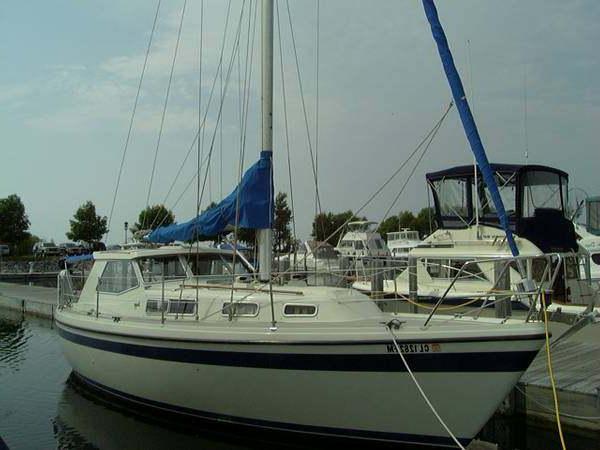
Review of LM 28
Basic specs..
The hull is made of hand laid fibreglass while the deck is made of fibreglass. Generally, a hull made of hand laid fibreglass requires only a minimum of maintenance during the sailing season. And outside the sailing season, just bottom cleaning and perhaps anti-fouling painting once a year - a few hours of work, that's all. The deck is a double deck which improves the indoor climate.
The interior is like most other boats made of teak. Teak has the advantage of being naturally very oily and therefore water-repellent, which is suitable on boats. The boat is equipped with 2 cabins, 5 berths, a galley, 140.0 liter fresh water capacity and toilet facility.
The boat equipped with a masthead rig. The advantage of a masthead rig is its simplicity and the fact that a given sail area - compared with a fractional rig - can be carried lower and thus with less heeling moment.
The keel is made of iron. Many people prefer lead keel in favour of iron. The main argument is that lead is much heavier than iron and a lead keel can therefore be made smaller which again result in less wet surface, i.e. less drag. In fact iron is quite heavy, just 30% less heavy than lead, so the advantage of a lead keel is often overstated.
The boat can enter even shallow marinas as the draft is just about 1.35 - 1.45 meter (4.43 - 4.73 ft) dependent on the load. See immersion rate below.
LM 28 is typically equipped with an inboard Volvo Penta 2003 diesel engine at 28.0 hp (20 kW), which gives a max speed about 6.4 knots.
The transmission is a saildrive.
The fuel tank which is made of stainless steel has a capacity of 140.0 liters (36 US gallons, 30 imperial gallons).
Sailing characteristics
This section covers widely used rules of thumb to describe the sailing characteristics. Please note that even though the calculations are correct, the interpretation of the results might not be valid for extreme boats.
What is Capsize Screening Formula (CSF)?
The capsize screening value for LM 28 is 1.81, indicating that this boat could - if evaluated by this formula alone - be accepted to participate in ocean races.
What is Theoretical Maximum Hull Speed?
The theoretical maximal speed of a displacement boat of this length is 6.6 knots. The term "Theoretical Maximum Hull Speed" is widely used even though a boat can sail faster. The term shall be interpreted as above the theoretical speed a great additional power is necessary for a small gain in speed.
The immersion rate is defined as the weight required to sink the boat a certain level. The immersion rate for LM 28 is about 145 kg/cm, alternatively 816 lbs/inch. Meaning: if you load 145 kg cargo on the boat then it will sink 1 cm. Alternatively, if you load 816 lbs cargo on the boat it will sink 1 inch.
Sailing statistics
This section is statistical comparison with similar boats of the same category. The basis of the following statistical computations is our unique database with more than 26,000 different boat types and 350,000 data points.
What is Motion Comfort Ratio (MCR)?
What is L/B (Length Beam Ratio)?
What is a Ballast Ratio?
What is Displacement Length Ratio?
What is SA/D (Sail Area Displacement ratio)?
What is Relative Speed Performance?
Maintenance
When buying anti-fouling bottom paint, it's nice to know how much to buy. The surface of the wet bottom is about 24m 2 (258 ft 2 ). Based on this, your favourite maritime shop can tell you the quantity you need.
Are your sails worn out? You might find your next sail here: Sails for Sale
If you need to renew parts of your running rig and is not quite sure of the dimensions, you may find the estimates computed below useful.
| Usage | Length | Diameter | ||
| Mainsail halyard | 23.8 m | (78.1 feet) | 8 mm | (5/16 inch) |
| Jib/genoa halyard | 23.8 m | (78.1 feet) | 8 mm | (5/16 inch) |
| Spinnaker halyard | 23.8 m | (78.1 feet) | 8 mm | (5/16 inch) |
| Jib sheet | 8.8 m | (28.7 feet) | 10 mm | (3/8 inch) |
| Genoa sheet | 8.8 m | (28.7 feet) | 10 mm | (3/8 inch) |
| Mainsheet | 21.9 m | (71.8 feet) | 10 mm | (3/8 inch) |
| Spinnaker sheet | 19.2 m | (63.2 feet) | 10 mm | (3/8 inch) |
| Cunningham | 3.2 m | (10.5 feet) | 8 mm | (5/16 inch) |
| Kickingstrap | 6.4 m | (21.0 feet) | 8 mm | (5/16 inch) |
| Clew-outhaul | 6.4 m | (21.0 feet) | 8 mm | (5/16 inch) |
This section is reserved boat owner's modifications, improvements, etc. Here you might find (or contribute with) inspiration for your boat.
Do you have changes/improvements you would like to share? Upload a photo and describe what you have done.
We are always looking for new photos. If you can contribute with photos for LM 28 it would be a great help.
If you have any comments to the review, improvement suggestions, or the like, feel free to contact us . Criticism helps us to improve.

LM 28 similar search results:
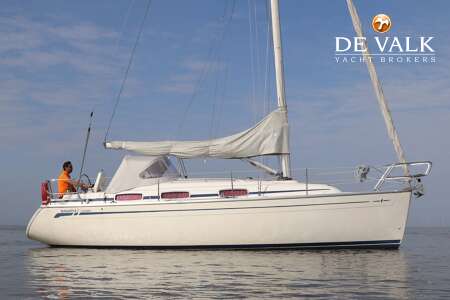
BAVARIA 30 CRUISER
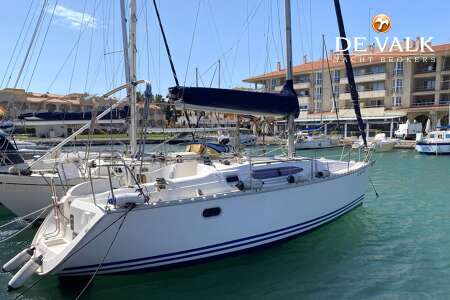
JEANNEAU SUN ODYSSEY 32.2

The LM 28 shown below has been sold:

Sales information
- De Valk Monnickendam The Netherlands
- +31 299 65 63 50
- Call the broker
e-mail the broker
Tell a friend.
- download brochure
Take time onboard with a live video tour
Seen a boat that piques your interest but can't make a visit in person? One of our brokers will be your eyes and ears as they take you on a video tour with their phone. You can also ask them questions about anything that isn't visually obvious. Make the call and be welcomed aboard...
Download brochure
Broker's comments.
The LM 28 is an easy to handle strong Danish design. She comes well equipped and very well maintained just new on the market.
| 8,95 x 2,90 x 1,35 (m) | ||
| grp | ||
| 1987 | ||
| 1 x Volvo Penta 2003 Diesel | ||
| 28 (hp), 20,58 (kw) |
| at sales office | ||
| De Valk Monnickendam | ||
| sold | ||
General - LM 28
GRP motorsailor LM 28 "Torbolé", built in 1987 by LM Glasfiber a/s in Kolding - Denmark, dim.: Loa 8,95 m (Lwl 7,50 m) x 2,90 m x 1,35 m, design by LM Glasfiber, GRP hull, superstructure and deck, round bilged white hull with blue striping, fin keel, displacement: 4,0 tonnes, ballast: 1,55 tonnes, fuel tank: 140 litres, fresh water tank: 140 litres, sump tank, wheel steering, emergency tiller.
Accommodation
Classic teak interior, wheelhouse with galley, saloon + front cabin, 2 (+3) berths, headroom: approx. 1,78 m, marine head with wash bowl and manual toilet (in waste tank), Wallas Marine heating, hot water through boiler (runs on 220V and engine), electric water pressure system, galley with sink, two burner gas stove and a fridge (under helm seat) and crockery,
Volvo Penta 3 cylinder 28 hp diesel engine , Saildrive, engine control system, consumption approx.: 3 litres per hour, cruising speed: 6 knots, maximum speed: 7 knots, batteries: 1x 90 ah + 1x 73 ah, electric circuit: 12V/220V, shore power, Calina battery charger.
Silva compass, Echopilot 770, Sumlog SL log - must be checked, wind set: speed, Sailtron RT80 VHF - no Atis, Autohelm autopilot.
Cockpit cover, winter cover for cockpit, cockpit table, teak on cockpit benches, life jackets, boarding ladder s/s, two wired sea railing s/s, two wipers.
Sloop rigged, John Mast a/s aluminium mast, head sail furling system, fittings s/s, standing rig s/s, slab reefing system, sails: main sail 16 m2 + genoa I 23 m2 + spare, sail cover, back stay adjuster, boom vang, two winches in cockpit and two Anderson two-speed winches, spi pole.

- Boats for Sale
New and used LM 28 boats for sale
- United Kingdom
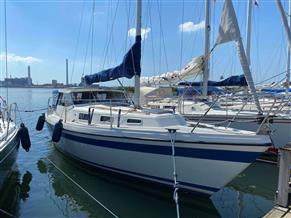
Search for a LM 28 on the worlds largest network. We have LM 28 brokers and sellers from around the world at great prices.
Sign up to our newsletter
By submitting this form, you agree to our Privacy & Cookie Policy
Change units of measure
This feature requires cookies to be enabled on your browser.
Show price in:
Show lengths, beam and draft in:
Show displacement or weight in:
Show capacity or volume in:
Show speed in:
Show distance in:

- Boats for Sale

Boats similar to LM 28
1983 lm 28 for sale.
Dochgarroch
OFFERED BY:
Caley Marina
1999 Precision 28 for sale
Holiday, Florida
1984 LM 28 for sale
Network Yacht Brokers
1986 Pearson 28 for sale
New Bern, North Carolina
Beaufort Yacht Sales
1984 O'day Boats 28 for sale
Bay Shore, New York
1977 Kells 28 for sale
Palmetto, Florida
1978 Southern Cross 28 for sale
Warwick, Rhode Island
Brewer Yacht Sales
1997 Hunter 28 for sale
Baltimore, Maryland
Annapolis Sailyard
Boat not available.
LM 28 for sale in Alicante Spain
Alicante Spain
Make & Model
No Tax Paid
MEASUREMENTS
Fresh Water Tanks
DESCRIPTION
Last dry-docked with antifouling, engine overhaul, thermostat, cooling and oil change in June 2023.
Certificate of seaworthiness until 2028.
Certified for zone 4.
Approved for 8 persons.
Shower in cockpit.
Ready to sail.
Navigation instruments / Equipment
Depth sounder, Compass, Log, x2 VHF, CD stereo, TV, Radar, Autopilot, GPS, Plotter, Wind direction, Wind speed.
Electric and manual bilge pump.
Battery charger, 2X110 batteries. Tail drive.
Electrical installation 12 V+220 V. Water pressure system.
Sewage tank 100L with pump.
Deck equipment
Bathing ladder, Bathing platform, Anchor, Bimini top, Sprayhood, Vests x8, Emergency rudder, Dinghy, 2T outboard engine.
Accommodation
1 Cabins, 4 berths, Gas cooker, sink and fridge, W.C.
Wheel rudder and tiller, Mast, Roller furling genoa (10 years), Mainsail with lazy bag (10 years), Spinnaker, Genaquer.
Engine Count
Engine Tankage
Engine Horse Power
ADDITIONAL INFORMATION
NAVIGATION EQUIPMENT
Wind Instrument
GENERAL EQUIPMENT
ABOUT LM 28
The LM 28 is 28 feet long and has a 9.3 feet beam and a draft of 1.40. This 1985 LM 28 with 20 horsepower. The LM 28. This vessel comes equipped with bimini as well as being equipped with vhf, compass, wind instrument, autopilot, plotter.
SIMILAR LOCATIONS
- LM in Spain
- Boats in Spain
Our server will be updated in 5 min., sorry for the bump and inconvenience.

- Create user
- Insert an ad
Well-Sailing Danish-Built Motor Sailer
Build year: 1985, motor sailor for sale.
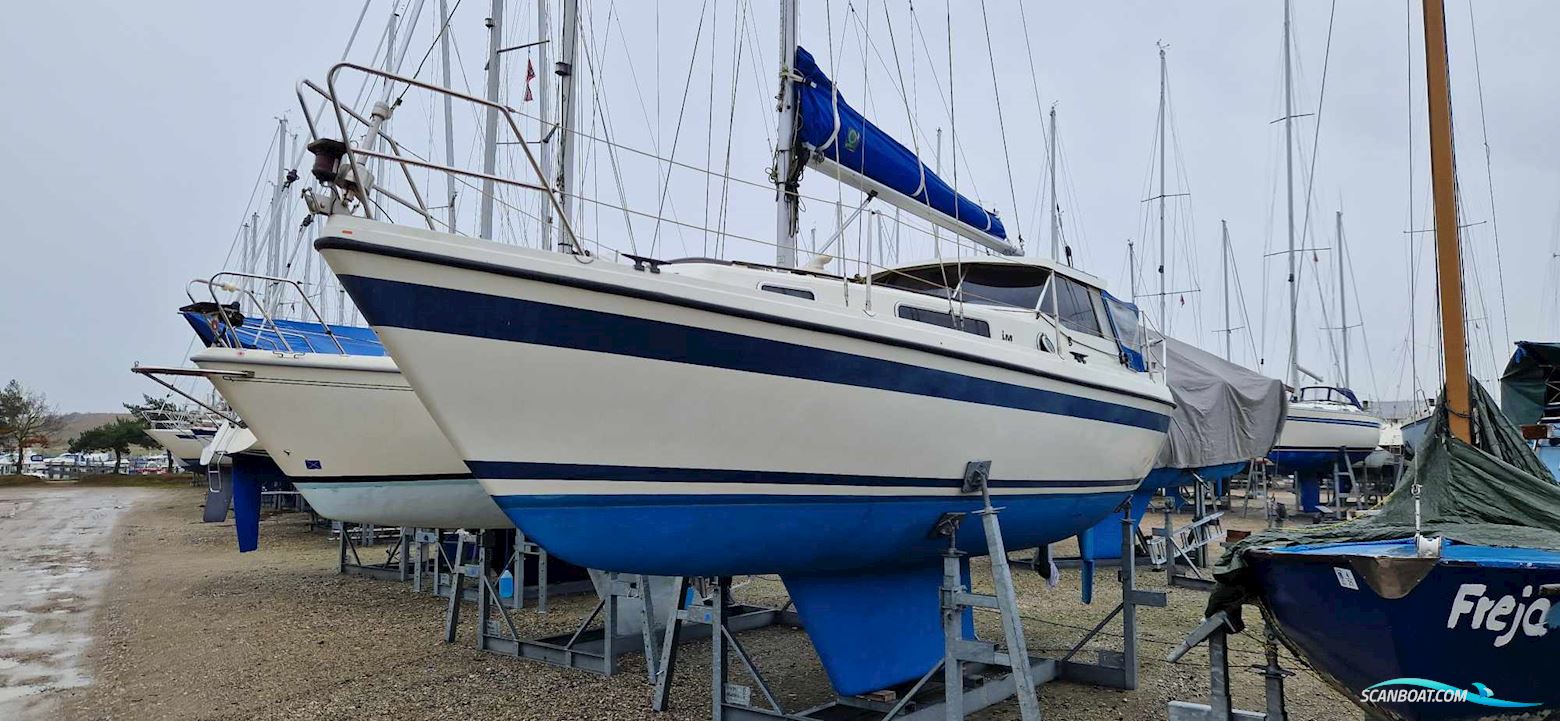
(140,000 DKK)
- CP Bådformidling
- Højmarken 2
- DK 4771 Kalvehave
- +45 22 50 22 40
Description
LM 28 - A well-known and popular motor sailboat from the Danish shipyard. LM 28 is a motor sailboat known for its good sailing performance. The boat is equipped with a seating area aft, where the boat can also be steered via a tiller. In continuation of this, the steering position and the boat's pantry with sink, stove, and refrigerator are located under the steering position. The boat's salon has two sofa groups that can be converted into 3 sleeping places. In the bow, there is a forward cabin with a double bed. The boat's toilet is electric and new. In the toilet room, there is also a sink and shower. The engine is a Bukh DV20, with the hour meter showing 3150 hours. The seller had the cylinder head gasket replaced last year, just to maintain it and ensure that the engine is in good condition. This LM 28 is in good condition, but due to illness, it is no longer being used. The boat needs a wash, etc. on the exterior and to be prepared for the 2024 season. Is this LM 28 interesting? See the equipment list below or contact CP Bådformidling.
LM 28 - En velkendt og populær motorsejler fra det danske værft. LM 28 en motorsejler, der er kendt for at sejle godt for sejl. Båden er indrettet med siddegruppe agter, hvor båden også kan styres via rorpind. I forlængelse af dette, er styrepladsen samt bådens pantry med vask og komfur samt køleskab under styreplads. Bådens salon er med to sofagrupper, der kan laves om til 3 sovepladser. I stævnen er forkahyt med dobbeltseng. Bådens toilet er elektrisk og nyt. I toiletrummet er der derudover vask og bruser. Motoren er en Bukh DV20, hvor timetælleren viser 3150 timer. Sælger fik skiftet toppakning på den sidste år, blot for at vedligeholde den og sørge for, at motorens stand er god. Denne LM 28 fremstræder i god stand, men grundet sygdom, bliver den ikke brugt længere. Båden trænger til en vask m.m. udvendigt og klargjort til sæson 2024. Er denne LM 28 interessant? Se udstyrslisten herunder eller kontakt CP Bådformidling.
LM 28 - En välkänd och populär motorseglare från danska varvet. LM 28 är en motorseglare som är känd för att segla bra under segel. Båten är inredd med sittgrupp akterut, där båten också kan styras med hjälp av rorkult. I förlängningen av detta finns styrförarplatsen samt båtens pentry med diskho, spis och kylskåp under styrförarplatsen. Båtens salong har två soffgrupper som kan omvandlas till 3 sovplatser. I fören finns en förhytt med dubbelsäng. Båtens toalett är elektrisk och ny. I toalettrummet finns även handfat och dusch. Motorn är en Bukh DV20, där timräknaren visar 3150 timmar. Säljaren bytte topplockspackningen förra året bara för att underhålla den och se till att motorns skick är bra. Denna LM 28 är i gott skick, men på grund av sjukdom används den inte längre. Båten behöver tvättas och göras i ordning inför säsongen 2024. Är denna LM 28 intressant? Se utrustningslistan nedan eller kontakta CP Bådformidling.
LM 28 - Een bekende en populaire motorzeiler van de Deense werf. LM 28 is een motorzeiler die bekend staat om zijn goede zeileigenschappen. De boot is voorzien van een zithoek achterin, waar de boot ook kan worden bestuurd met een helmstok. Daarnaast bevindt zich de stuurpositie en de kombuis van de boot met een gootsteen, kookplaat en koelkast onder de stuurpositie. De salon van de boot heeft twee zithoeken die kunnen worden omgebouwd tot 3 slaapplaatsen. In de boeg bevindt zich een voorhut met een tweepersoonsbed. Het toilet van de boot is nieuw en elektrisch. In de toiletruimte bevindt zich ook een wastafel en douche. De motor is een Bukh DV20, met een draaiurenstand van 3150 uur. De verkoper heeft vorig jaar de koppakking vervangen om de motor te onderhouden en ervoor te zorgen dat deze in goede staat verkeert. Deze LM 28 verkeert in goede staat, maar vanwege ziekte wordt hij niet langer gebruikt. De boot heeft wat schoonmaakwerk en onderhoud nodig aan de buitenkant om klaar te zijn voor het seizoen van 2024. Is deze LM 28 interessant? Bekijk de uitrustingslijst hieronder of neem contact op met CP Bådformidling.
LM 28 - Ein bekanntes und beliebtes Motorsegelboot von der dänischen Werft. LM 28 ist ein Motorsegelboot, das für seine guten Segeleigenschaften bekannt ist. Das Boot ist mit einer Sitzgruppe achtern ausgestattet, von der aus das Boot auch über den Pinne gesteuert werden kann. Darüber hinaus befinden sich hier auch der Steuerstand und die Pantry des Bootes mit Spüle, Herd und Kühlschrank unter dem Steuerstand. Der Salon des Bootes verfügt über zwei Sofagruppen, die zu 3 Schlafplätzen umgebaut werden können. Im Bug befindet sich eine Bugkabine mit Doppelbett. Die Toilette des Bootes ist elektrisch und neu. Im Toilettenraum befinden sich außerdem Waschbecken und Dusche. Der Motor ist ein Bukh DV20, der 3150 Stunden auf dem Zähler hat. Der Verkäufer hat letztes Jahr die Zylinderkopfdichtung gewechselt, um den Motor zu warten und sicherzustellen, dass er sich in gutem Zustand befindet. Diese LM 28 ist in gutem Zustand, wird aber aufgrund von Krankheit nicht mehr genutzt. Das Boot benötigt eine Reinigung usw. außen und muss für die Saison 2024 vorbereitet werden. Ist diese LM 28 interessant? Sehen Sie sich die Ausrüstungsliste unten an oder kontaktieren Sie CP Bådformidling.
Materiale / unit
Deplacement
Motor & technic
Total power
From a furniture factory to a global leader - the captivating story of LM. Originally founded as Lunderskov Møbelfabrik in 1940, LM Boats has evolved into a prominent player in boat production. It all began with their successful manufacturing of wooden children's furniture. As demand grew, LM Boats transitioned to a proper factory in Møllegade, Lunderskov, Denmark, in the 1950s. Meanwhile, LM Glasfiber started by producing various boats, including a unique houseboat. However, in 1978, they recognized the potential of the emerging wind energy industry and cast their first wind turbine blade. Denmark's embrace of alternative energy sources after the 1970s energy crises led to a boom in wind turbine production. Seizing the opportunity, LM Glasfiber pivoted to manufacturing wind turbine blades exclusively and ceased their boat production operations.
Sellers boats
Gallery ads
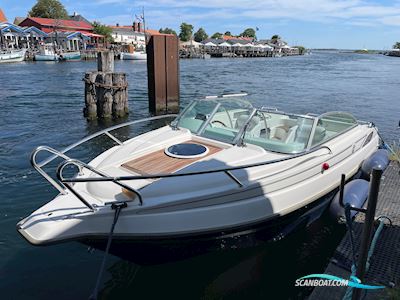
Your e-mail is now sent. This window will be close automatically

Quick Contact
I prefer to have sellers reply in (choose min. 1 language):, we translate into sellers preferred language, fast and easy, highlight your ad.
Choose Basic, Focus or Boost
To ensure your ad is with photo and info on the list pages and easily accessible on the details page, please choose Basic, Focus or Boost
When your ad is visible, you also get a faster sale!
Please Confirm
Are you sure you want to do this.
Link is sent to your registered scanboat mail
This website uses cookies
We use cookies to improve the user experience. Choose which cookies you want to use. You can read more about our Cookie Policy here.
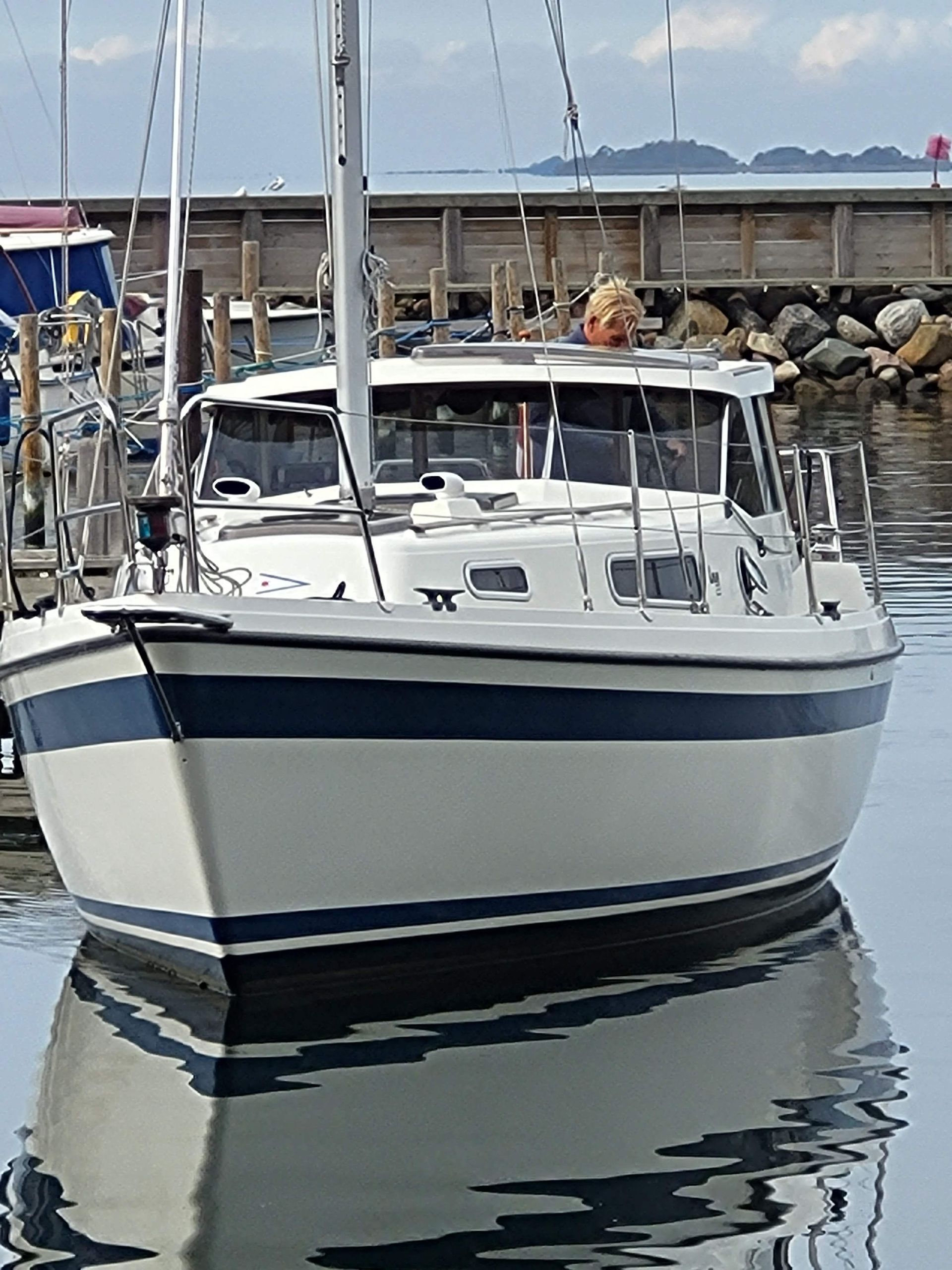
- Volvo Penta 2003
- 8.95 m (29.4 ft)
- 2.9 m (9.5 ft)
- 1.35 m (4.4 ft)
- Rudkøbing, DK

Equipment list
Description and equipment list are provided by owner and YachtBroker is not responsible for any errors or inaccuracies
See also ...

IMAGES
VIDEO
COMMENTS
A boat with a BN of 1.6 or greater is a boat that will be reefed often in offshore cruising. Derek Harvey, "Multihulls for Cruising and Racing", International Marine, Camden, Maine, 1991, states that a BN of 1 is generally accepted as the dividing line between so-called slow and fast multihulls.
Find LM 28 boats for sale in your area & across the world on YachtWorld. Offering the best selection of LM boats to choose from.
LM 28 is a 27′ 11″ / 8.5 m monohull sailboat designed by Bent Juul Andersen and built by LM Glasfiber between 1982 and 1991. ... the more easily it will carry a load and the more comfortable its motion will be. The lower a boat's ratio is, the less power it takes to drive the boat to its nominal hull speed or beyond. Read more. Formula. D/L ...
Some of the most widely-known LM models currently listed include: 28, 35 and LM23. Various LM models are currently offered for sale by specialized yacht brokers, dealers and brokerages on YachtWorld, with listings ranging from 1975 year models up to 1999. Find LM boats for sale in your area & across the world on YachtWorld.
LM 28 boats for sale 4 Boats Available. Currency $ - USD - US Dollar Sort Sort Order List View Gallery View Submit. Advertisement. New Arrival. Save This Boat. LM 28 . Noank, Connecticut. 1983. $37,995 Seller Springline Yacht Sales 42. Contact. 860-854-7569. ×. Save This Boat. LM 28 . Greifswald, Mecklenburg-Western Pomerania, Germany ...
Production ceased in the late 1980s when this boat cost over $100,000; the LM 27 is now in limited production in Britain (as the Scanyacht 290) for over $100K, but without the large glass space of the LM 28. Previously a famous furniture maker, LM is now the world's largest manufacturer of wind generating devices. Safina is the featured boat ...
LM 28 Sailboat Data. Hull Type: Long Keel Rigging Type: Masthead Sloop LOA: 28.00 ft / 8.53 m LWL: 24.58 ft / 7.49 m S.A. (reported): 355.00 ft² / 32.98 m² Beam: 9.50 ft / 2.90 m Displacement: 8,000.00 lb / 3,629 kg Ballast: 2,500.00 lb / 1,134 kg Max Draft: 4.42 ft / 1.35 m Construction: FG First Built: 1982 Last Built: 1991 # Built: 325 Builder: LM Glasfiber A/S (DEN) Designer: Bent Juul ...
1983 29'4" 1983 LM 28 Motorsailer Sailboat For Sale - $37,995 - Noank, Connecticut. See boat pictures, videos, and detailed specs.
The immersion rate is defined as the weight required to sink the boat a certain level. The immersion rate for LM 28 is about 145 kg/cm, alternatively 816 lbs/inch. Meaning: if you load 145 kg cargo on the boat then it will sink 1 cm. Alternatively, if you load 816 lbs cargo on the boat it will sink 1 inch.
The LM 28 is a motor-sailor designed by Bent Juul Anderson. 325 were built between 1982 and 1991 by the Danish yard LM Glasfiber A/S. Lazy Mariner was built in 1985 and is a fine example of Scandinavian quality boat building. The teak interior of Lazy Mariner is both innovative as it is vast and is comparable to yachts over 3 or 4 feet longer.
General - LM 28. GRP motorsailor LM 28 "Torbolé", built in 1987 by LM Glasfiber a/s in Kolding - Denmark, dim.: Loa 8,95 m (Lwl 7,50 m) x 2,90 m x 1,35 m, design by LM Glasfiber, GRP hull, superstructure and deck, round bilged white hull with blue striping, fin keel, displacement: 4,0 tonnes, ballast: 1,55 tonnes, fuel tank: 140 litres, fresh ...
Listed price €21,456 EUR. 1984 | 8.53m | Sail. View details. All boats from Yachtbasen. Contact Seller. Search for a LM 28 on the worlds largest network. We have LM 28 brokers and sellers from around the world at great prices. Used LM 28 for sale from around the world. Search our full range of used LM 28 on www.theyachtmarket.com.
The LM 28 is a motor-sailor designed by Bent Juul Anderson. 325 were built between 1982 and 1991 by the Danish yard LM Glasfiber A/S. Lazy Mariner was built in 1985 and is a fine example of Scandinavian quality boat building. The teak interior of Lazy Mariner is both innovative as it is vast and is comparable to yachts over 3 or 4 feet longer.
Buy a boat, Sell or list your boat for rent or sale, find berths, and more. Boats For Sale Power Boats Sail Boats. Research & Advice Buying A Boat Selling A Boat Boats & Technology Explore. ... The LM 28 is 28 feet long and has a 9.3 feet beam and a draft of 1.40. This 1985 LM 28 with 20 horsepower. The LM 28.
DailyBoats.com lists LM 28 for sale , with prices ranging from $25,405 for the more basic models to $49,793 for the most expensive. These yachts come in various sizes, ranging from 27.4 ft to 29.53 ft, with the oldest yacht built in 1983. This page features LM boats located in Denmark, Germany, United Kingdom and Kingdom of the Netherlands.
LM 28 is a motor sailboat known for its good sailing performance. The boat is equipped with a seating area aft, where the boat can also be steered via a tiller. In continuation of this, the steering position and the boat's pantry with sink, stove, and refrigerator are located under the steering position. The boat's salon has two sofa groups ...
Weight. 3.6 ton. Hull. Fiberglass. Location. Rudkøbing, DK. Contact broker Create search agent. LM 28. LM 28 this boat is in super good condition and should definitely be seen, there are newer sails from DK Sails 2017, there is made bottom treatment in 2017, sea valves are changed in 2016, new EL toilet with tank from 2016, new polycarbonate ...
Buy LM 28 - equipment motor sailer - sailboat for sale Navigation autopilot (Autohelm 2000), compass, echo sounder, GPS, position lights, speed log, VHF radio Technical equipment anchor (about bowsprit), battery (service accu mei 2024), battery charger, shore supply 220V, voltmeter Deck equipment bathing ladder (stainless steel), fenders, guard rail (stainless steel), sprayhood ((fixed ...
LM 28 buy - Year Built: 1988, Length: 8.95 m, Width: 2.90 m - Information, Photos and Contact Details for this Boat. (ID: 477277) Buy; Sell; ... Manufacturer LM Boats sailing boats Model 28 Year of construction1 988 Condition used Length 8.95 m Width 2.90 m Draft 1.35 m Displacement 4000 kg Ballast 1,550 kg
LM 28 boats for sale in United States 1 Boats Available. Currency $ - USD - US Dollar Sort Sort Order List View Gallery View Submit. Advertisement. New Arrival. Save This Boat. LM 28 . Noank, Connecticut. 1983. $37,995 Seller Springline Yacht Sales 42. Contact. 860-854-7569. ×. Advertisement. Request Information. Contact Seller X ...
LM 28 Sailboat / motor sailer: LM Boats / LM Glasfiber, used boat, GRP/polyester Length x beam: 8.95 m x 2.90 m, 8.95 x 2.90 m built: 1983 Engine: Bukh Diesel DV20, 20 hp (15 kW), diesel € 24,950 Location: Netherlands, Aalsmeer 1983 Company: Wehmeyer Yacht Brokers
LM 28 boats for sale 4 Boats Available. Currency £ - GBP - British Pound Sort Sort Order List View Gallery View Submit. Advertisement. Sale Pending. Save This Boat. LM 28 . Aalsmeer, Netherlands. 1983. £21,452 (Sale Pending) Seller Wehmeyer Yacht Brokers 47. Contact +31(0)6 54 71 37 33. ×. Save This Boat. LM 28 ...
Production ceased in the late 1980s when this boat cost over $100,000; the LM 27 is now in limited production in Britain (as the Scanyacht 290) for over $100K, but without the large glass space of the LM 28. Previously a famous furniture maker, LM is now the world's largest manufacturer of wind generating devices. Safina is the featured boat ...